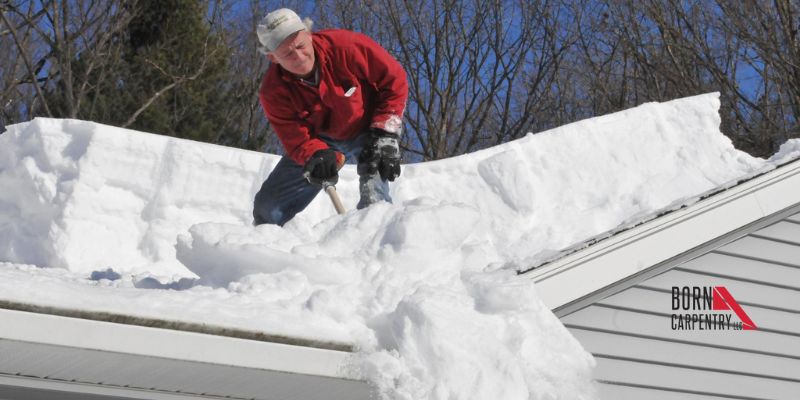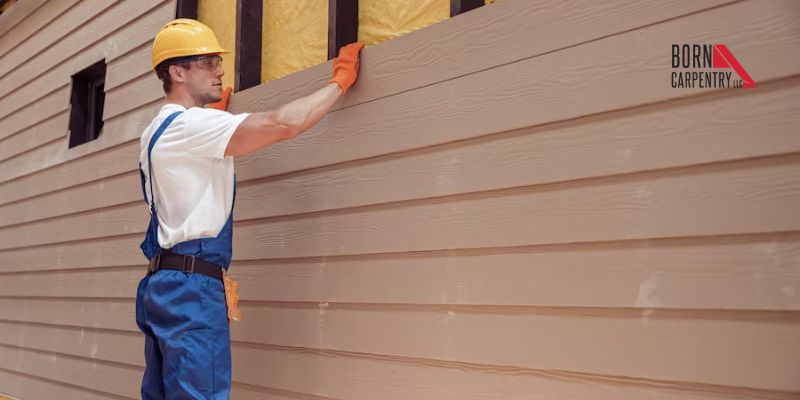Weather conditions can impact your home, with the harsh winter season affecting your home’s siding. For this reason, you must take essential steps to protect your home exterior. Maintaining your siding is a good way to start, and it will help keep your home in good condition.
Essential Tips for Winter Siding Maintenance
With proper maintenance, the exterior of your home will be in good condition. Winter siding maintenance can help you achieve this. Here are some tips that will ensure that you take proper care of your siding in the winter:
1. Inspect your siding
Regular siding inspections are essential for detecting and fixing potential problems before they worsen. Regularly inspect your siding for signs of damage such as cracks, holes, or loose areas. With this type of intervention, you can minimize the likelihood of more significant issues in the future.
Another thing you can do is to quickly repair any identified problems. This will help to maintain your home’s structural integrity and protect it from the elements. You will extend the durability and lifespan of your siding when you pay attention to your siding and address minor damages early. This way, you protect the aesthetic appeal and function of your home’s exterior.
2. Clean your siding
The harsh element of the winter season can leave your siding littered with debris, and coated in salt deposits. To restore its condition, gently cleanse the siding using a mild detergent, a soft-bristled brush, or a low-pressure setting on a power washer. Be cautious to avoid damaging the siding and do not exert too much pressure to avoid irreparable harm.
A gentle approach ensures thorough cleaning without jeopardizing the material’s integrity. With regular maintenance, you can enhance the curb appeal of your home. This is in addition to extending its lifespan and safeguarding it from potential long-term damage caused by winter-induced contaminants.
3. Remove ice and snow

During the winter months, there is always a buildup of ice and snow on your siding. Ensure that you handle these with care. Rather than using harsh tools or excessive force, look for a soft snow brush or broom to gently remove the accumulation. This approach will protect your siding from scratches, dents, and other damage that could compromise its integrity.
By prioritizing careful removal methods, you can maintain the beauty and functionality of your siding while effectively managing winter-related accumulations. Regular, gentle maintenance will extend the lifespan and resilience of your siding throughout the colder season.
4. Check for mold and mildew
As the winter season brings about damp and chilly conditions, the risk of mold and mildew growth increases. This happens to the siding spots that receive minimal sunlight. To avoid the issue, you must thoroughly inspect your siding. When you do this, you will be able to identify any signs of mold or mildew growth.
Upon detection, target the affected areas with a mixture of water and a specialized mildew cleaner. Ensure a careful cleaning process to eliminate all traces of mold and mildew. By taking action, you can prevent the proliferation of these harmful organisms. Generally, you will be protecting the structural integrity of your siding.
5. Trim overhanging branches
The buildup of snow and ice on tree branches during the winter months increases the chance of breakage. When this happens, your siding can be affected. To reduce this risk, you must trim any overhanging branches that might be weighed down by winter precipitation. Doing this will reduce potential hazards.
Furthermore, maintaining your trees regularly makes your exterior resilient to winter’s challenges and adds to the overall safety of your home during bad weather. Before winter storms arrive, take care of any overhanging branches to avoid any potential problems.
6. Seal gaps and cracks
Make sure to carefully examine your siding for any openings or fractures that might let moisture, cold air, or pests into your house. Weather stripping or premium caulking should be used to seal the openings. By doing this, you can prevent water damage to your home and keep unwanted pests at bay in addition to helping to maintain a comfortable indoor temperature.
This tip should help improve energy efficiency and bill savings. A more secure and weather proof home throughout the winter can be achieved at a lower cost by taking the time to seal these gaps. Maintaining this aspect of the home regularly makes it more energy-efficient overall.
7. Secure loose siding

The integrity of siding is important in areas that frequently experience strong winds and a lot of snow. The siding may become loose due to exposure to such weather. When this happens, there is an increased possibility of additional damage. This means that any loose parts must be quickly and firmly fastened.
Also, it is recommended that regular inspection is carried out to spot possible vulnerabilities and take measures to address them. Giving priority to these upkeep tasks will guarantee that your home’s exterior will last a long time and remain resilient in harsh weather.
8. Avoid using sharp objects
Take caution and avoid using sharp objects like metal shovels and ice picks when removing snow or ice from your siding. These tools may dent or scratch siding, affecting both the material’s structural stability and visual appeal.
As an alternative, use softer instruments to remove snow and ice gently and without damaging anything. Tools like brooms or plastic shovels are good. Making sure that the right tools are used when needed prolongs the life and aesthetic appeal of your siding and keeps it strong enough to withstand the harsh winter weather without needless wear and tear.
Conclusion
For the exterior of your home to be protected, winter siding maintenance is essential. Use soft tools to regularly remove snow and ice to avoid damage. Examine the item for signs of wear, take care of problems right away, and, if necessary, seek expert assistance. You can make sure that your home’s siding is durable and strong during the winter by prioritizing these tips.






